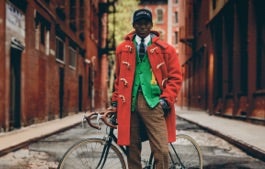
The RL Q+A:
Jimmy Begay, Jr.
The silversmith and artist on five decades of creating one-of-a-kind traditional Navajo masterpieces
“I’m still in the learning stage,” silversmith Jimmy Begay says when asked about his jewelry-making. “There’s always something new to learn, and to do with what I already know.”
What his modesty belies is a 50-plus-year self-taught career spent masterfully handcrafting beautiful and authentic Native American jewelry, and a status as one of the greatest keepers of a time-honored tradition.
Begay hails from the Navajo Nation reservation just west of Gallup, New Mexico, famed for its concentration of Native American artistry. “When I was small, I did a lot of sheep herding and I went to school for a little while,” he says. “And then I got into jewelry.”
The craft is an important cultural tradition for the Navajo, Begay and his partner Gayle explain, because of the individualism inherent in the jewelry. The ornateness and quality of each piece—be it a concho belt, a turquoise bracelet, or anything else, all designed with distinctive shapes and symbols—allow the Diyin Dineʼé, or Holy People, to recognize the Navajo in spiritual ceremonies. “Most people don’t want to go beyond the idea that it just looks pretty,” they explain. “But there’s a lot of meaning behind it.”
For Begay, his introduction to the craft began decades ago with a job as a humble buffer at one of Gallup’s local jewelry shops. There, he slowly learned the trade of smithing simply by watching others make their own jewelry. Eventually he relocated to Santa Fe at the request of a jeweler there and proceeded to spend 20 years becoming both a sought-after expert of heritage jewelry repair and an accomplished silversmith in his own right.
Now, decades later, and living back on the Navajo Nation reservation in western New Mexico, Begay’s work offers some of the most exquisite and coveted Navajo craftsmanship in the world. Case in point? The highly limited series of hand-smithed, heirloom-quality concho belts he recently created for Ralph Lauren Collection.
Below, he gives us a closer glimpse into his craft.




What kinds of jewelry do you make and where do you work?
What I learned to do in Gallup and Santa Fe was silver jewelry fabrication, from scratch. Now I’ll do whatever I think I can do, really—bracelets, rings, conchos—but it’s all custom work. People will want some kind of design of their own, and they’ll give me a pattern or some kind of drawing, and I’ll go from there. I make everything at home. We have a hogan, which is a traditional Navajo eight-sided dwelling with just one room. It has everything we need, and I have a workspace here. We get by with what we have.

What’s the process like when you’re creating something new?
It’s a slow, step-by-step process. I get silver in large sheets, all different gauges, and different kinds of silver wires. Then I’ll draw a pattern on a piece of paper to see what it would look like, and see how to design the silver, and then I’ll work from that pattern. I scribe the design onto a piece of silver, then go into the stamp-work where the design starts to come out.
Then I take a tooler’s saw to cut out the pattern and shape it. If it needs to be dome-shaped like a concho or shaped into a bracelet or ring—I use a mandrel for that. Then I solder, if it needs soldering, or add details if the design needs details: small patterns or silver beads, and things like that.
After all of that’s done, you have to place it into acid to get it all clean, and then add back some oxidation with sulfur to add some black color into the design. Then I’ll clean and buff off all of the fire scale blemishes that happen when you’re soldering silver. And on a bracelet or a ring, I’ll use steel wool to polish the inside. Then I’ll go back in with the sulfur to re-blacken it and add another light buff. And then after all of that, I’ll do a final polish of the silver. It comes out real nice, but it does take a while.
And you repair vintage jewelry too, right? During your two decades in Santa Fe, you became the go-to craftsman for jewelers who needed to have repairs done to vintage pieces.
I did. And the repair work, that’s even more challenging. If you’re working with turquoise, you have to be careful to not burn the stones. You have to re-fabricate broken pieces of silver. Things like that.
Living in Gallup and being Navajo, do you feel like your work has an added layer of personal, cultural significance?
It really does. You’re surrounded by it here. A lot of traders here even have pieces of what’s called “pawn jewelry,” which are pieces that used to belong to [Navajo] elders and are all fabricated with traditional designs.
It’s a traditional kind of work that we do—traditional pieces made by Navajo silversmiths. You can even tell who made what jewelry, since there are a lot of indigenous tribes that have their own designs and patterns.
But I just picked it up and learned it on my own, just by watching other jewelers do it.
And now you’re a master.
Well, like I said—I’m still learning.

- Courtesy of Jimmy Begay, Jr.







